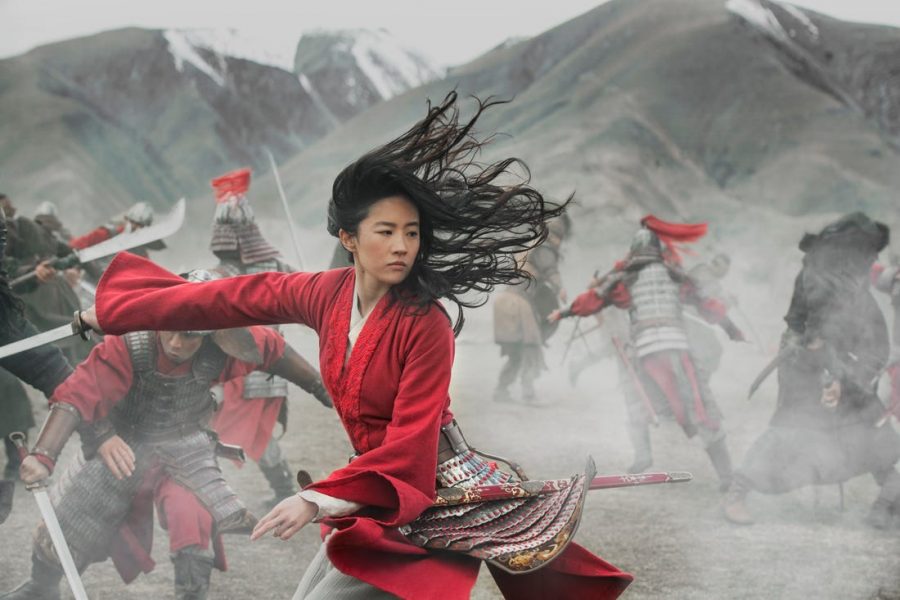Live-Action ‘Mulan’ Disappoints
Courtesy of Jasin Boland/Disney via AP
From the very beginning, a vivid color palette injects vitality into each of the frames. Even battle scenes (which are conventionally dull and gray) are kept lively with pops of primary red.
As the movie opens, we fly over terraced rice paddies to a cozy village center. We dive into the bustle of everyday life in Mulan’s hometown: the chase of an escaped chicken, the gossip between bored housewives, the haggling over market prices.
Niki Caro’s live-action “Mulan,” which released on Sept. 4th, has beautiful cinematography, but it misses the emotional depth present in the original Disney adaptation.
Every frame of the movie is artfully composed — dare I say, wallpaper-quality. But as the story progresses, it becomes obvious that the director relies on beautiful scenes and patterns to cover up poorly written transitions.
The speed at which scenes cut does not help. There is little time for characters to show emotional depth, and the relationship between Mulan and her comrades does not reach the same depth as in the original Disney adaptation.
Gravity is absent in Mulan’s most important moments; the scenes in which she separates from her family and reveals her identity to fellow troops are incredibly anticlimactic. There is no expression of shock.
The director throws in and abandons minor plot details at their convenience. Mulan is said to have extraordinary amounts of qi, or life energy, but it remains unexplained why she has so much or why she is so ashamed of it. Plot holes leave viewers feeling unfulfilled.
Costume design and set architecture borrow elements from multiple Chinese dynasties. Mulan’s home village is an amalgamation of dwellings into a single high-walled, circular structure: a Fujian tulou (13th–20th century). According to Mulan’s costume designer Bina Daigeler, the clothing draws from the multi-colored, flowing pieces of the Tang dynasty (7th–10th century).
But regardless, attempting historical accuracy is futile because the tale has contested origins to begin with. Like most folk tales, Mulan’s ballad exists in many forms, adapted by storytellers to fit different lessons. Mulan may be more made up than true.
At a $200 million budget, Mulan is a striking visual with an unsatisfying plot. Spend your $37 dollars on something else.
Your donation will support the student journalists of Portola High School. Your contribution will allow us to purchase equipment and cover our annual website hosting costs.






Ethan Zhang | Sep 11, 2020 at 11:49 pm
This is an amazing review, written perfectly in my opinion. It’s a shame that Disney, a movie making flagship, has disappointed people yet again with a poorly written plot. I’m not a movie expert, but I expected better.